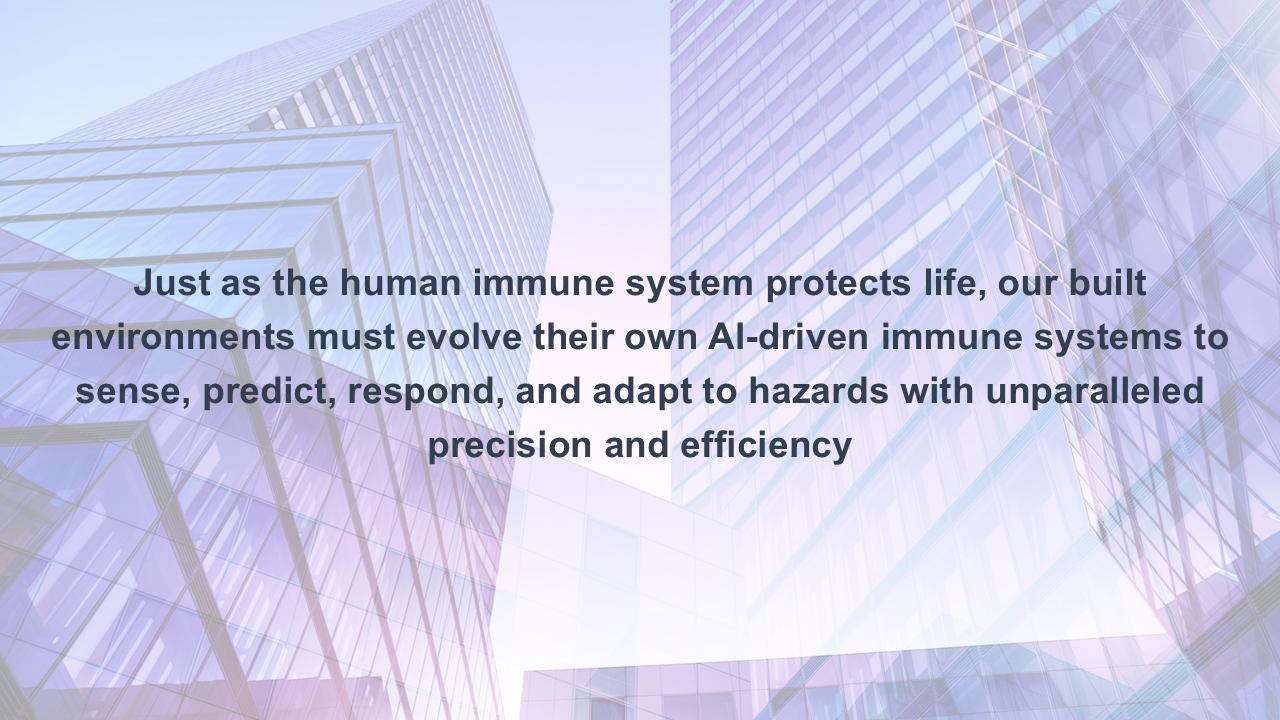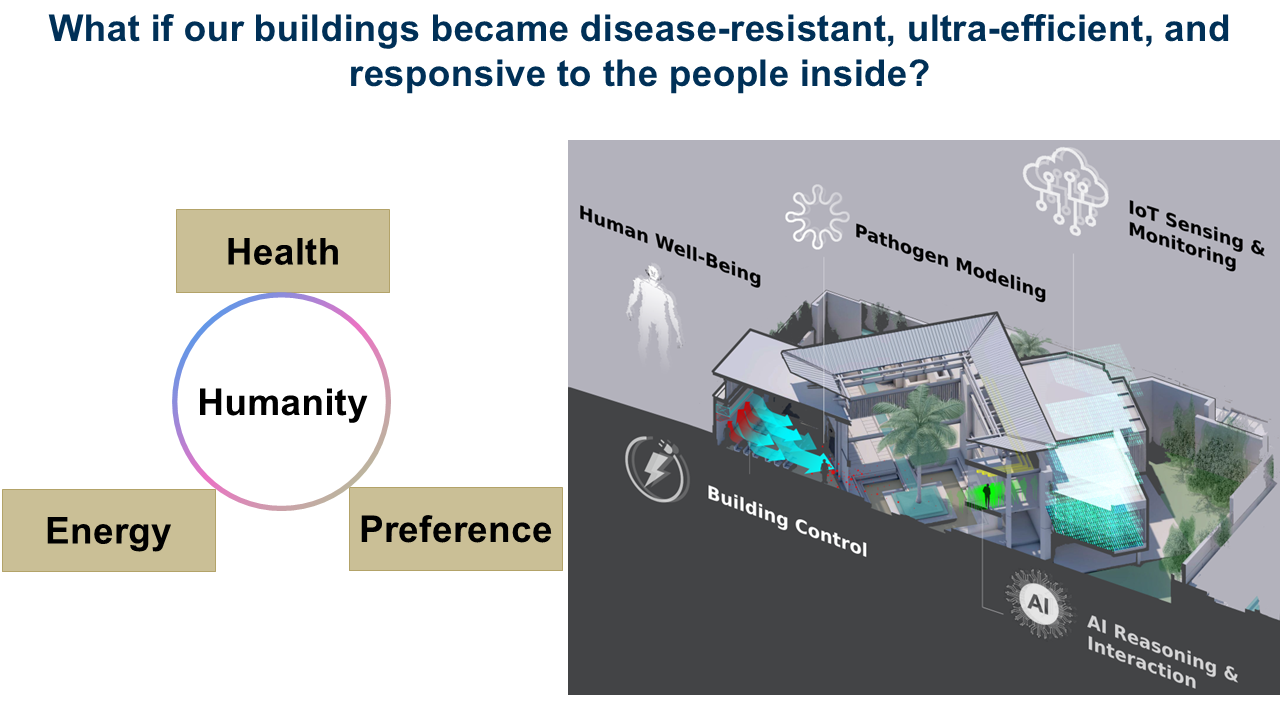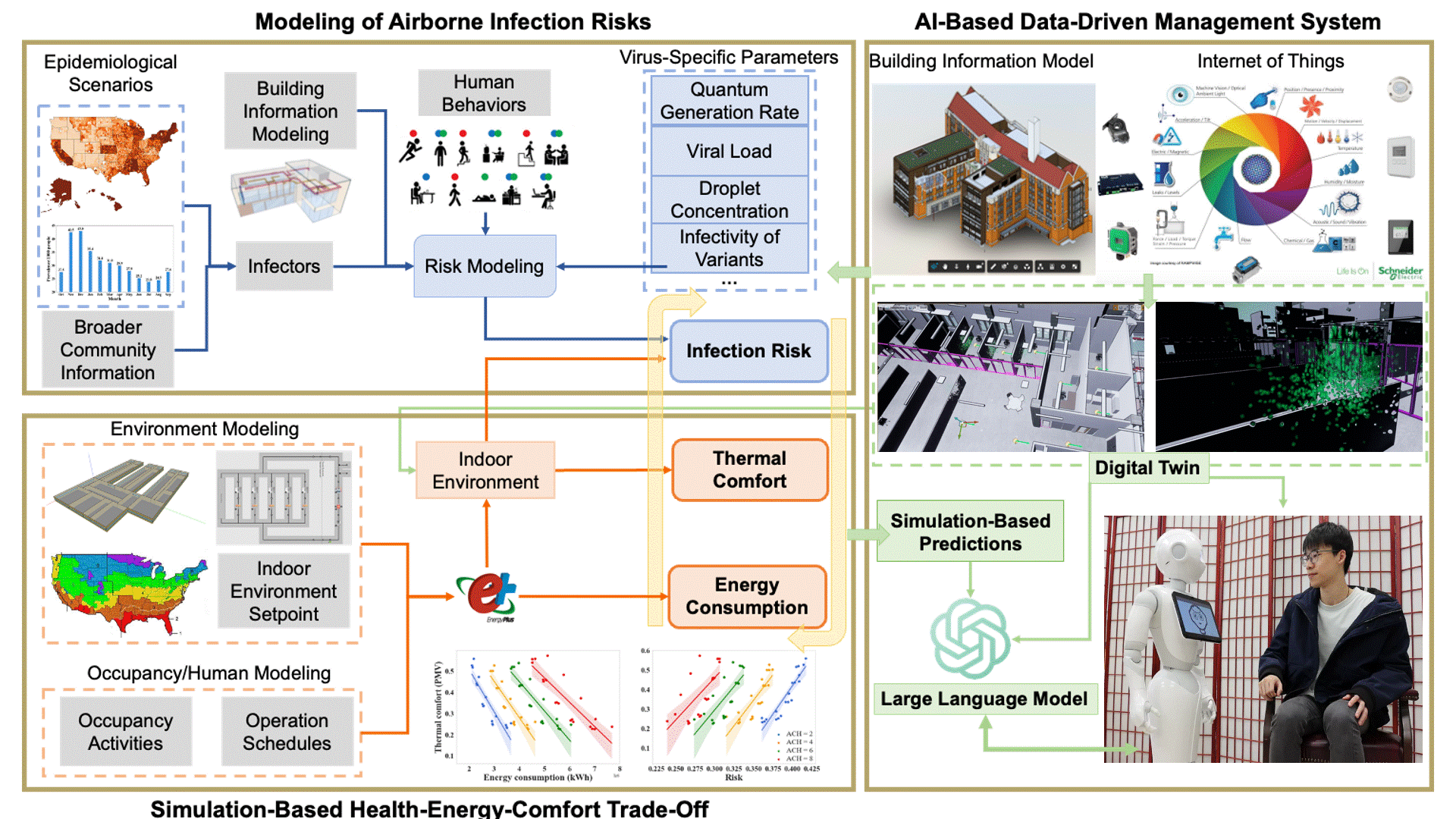Building Immunology
AI-based Immune Systems Protect You and Your Loved Ones in Buildings.



Publications
- Xu, Y., Chen, J., Cai, J., Li, S., & He, Q. (2023). Simulation-based trade-off modeling for indoor infection risk of airborne diseases, energy consumption, and thermal comfort. Journal of Building Engineering, 76, 107137.
- Xu, Y., Li, S., He, Q., Zhu, S., & Cai, J. (2022, December). Assessing Transmission Risks of SARS-COV-2 Omicron Variant In US School Facilities and Mitigation Measures. In 2022 Winter Simulation Conference (WSC) (pp. 629–640). IEEE.
- Cai, J., Li, S., Hu, D., Xu, Y., & He, Q. (2022). Nationwide assessment of energy costs and policies to limit airborne infection risks in US schools. Journal of Building Engineering, 45, 103533.
- Xu, Y., Cai, J., Li, S., He, Q., & Zhu, S. (2021). Airborne infection risks of SARS-CoV-2 in US schools and impacts of different intervention strategies. Sustainable Cities and Society, 74, 103188.
- Cao, L., Yang, L., Swanson, C. S., Li, S., & He, Q. (2021). Comparative analysis of impact of human occupancy on indoor microbiomes. Frontiers of Environmental Science & Engineering, 15(5), 89.
- Li, S., Yang, Z., Hu, D., Cao, L., & He, Q. (2021). Understanding building-occupant-microbiome interactions toward healthy built environments: A review. Frontiers of Environmental Science & Engineering, 15(4), 65.
- Li, S., Xu, Y., Cai, J., Hu, D., & He, Q. (2021). Integrated environment-occupant-pathogen information modeling to assess and communicate room-level outbreak risks of infectious diseases. Building and Environment, 187, 107394.